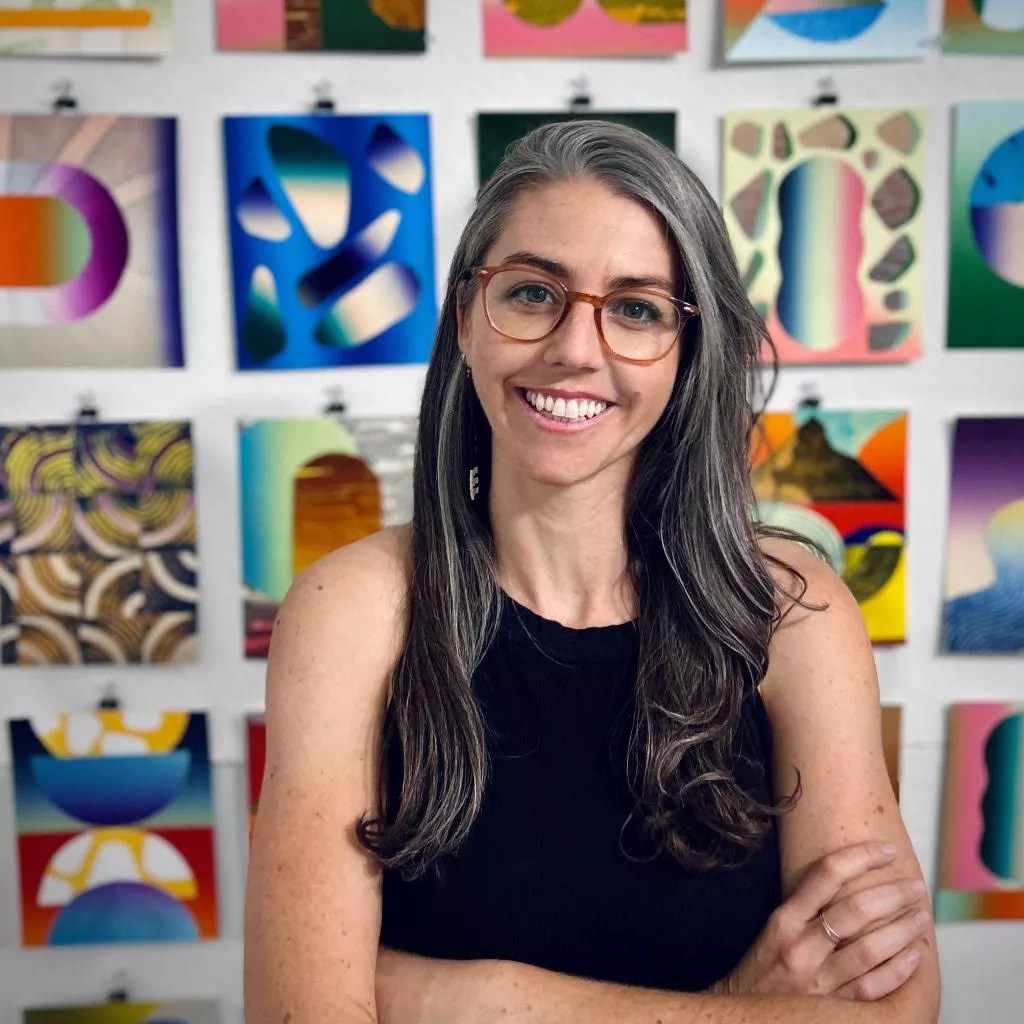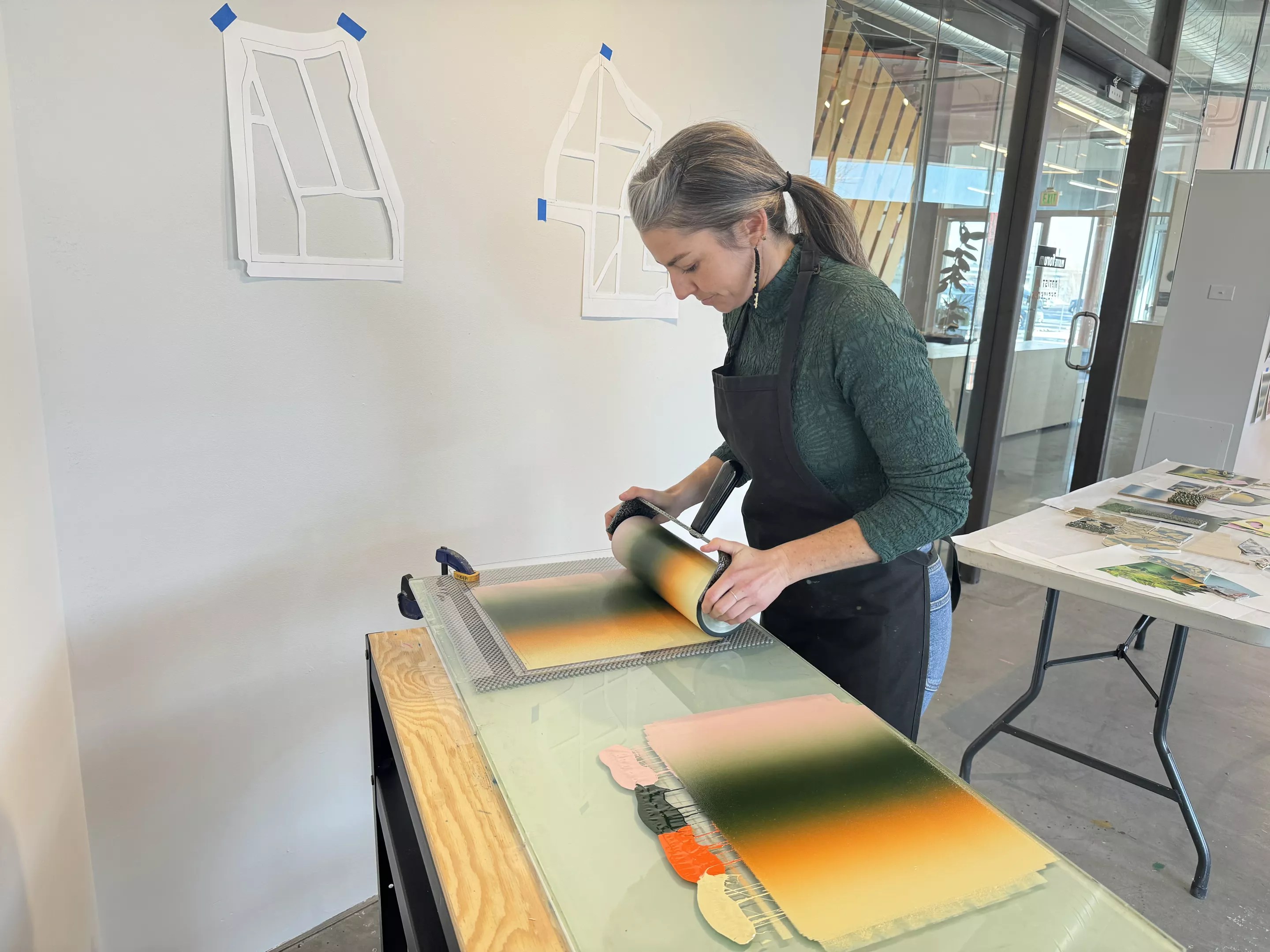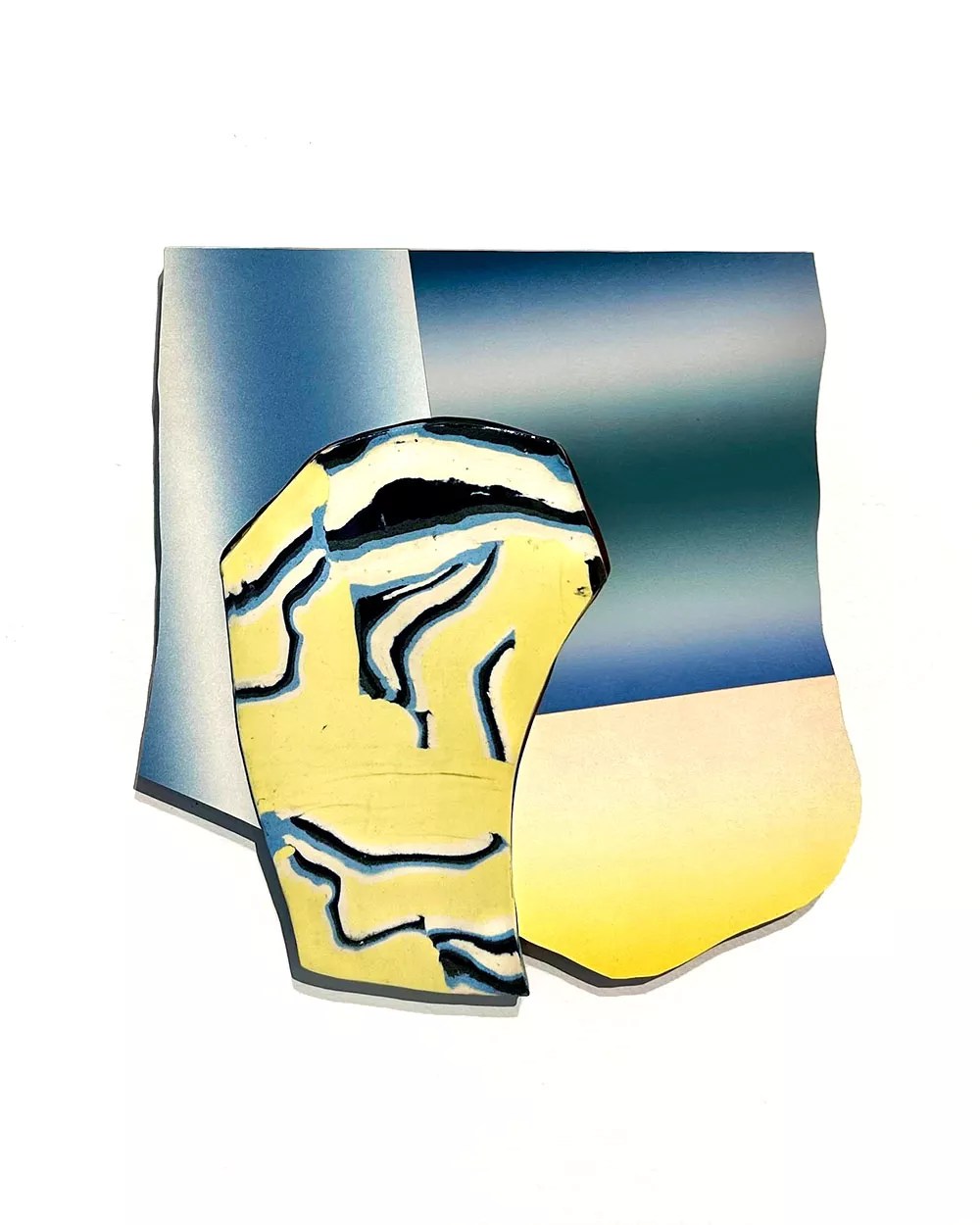
PlatteForum

Audio By Carbonatix
Fewer than three miles from the Suncor Oil Refinery in Commerce City sits the PlatteForum A.I.R. Annex Gallery in RiNo, where fifty high school students have joined artist Lucy Holtsnider to imagine a world where Suncor is no longer an oil refinery.
Since Suncor was built in the 1930s, the plant has constantly violated the terms of the refinery’s air pollution permits, emitting toxic chemicals like sulfur dioxide, volatile organic compounds, nitrogen oxides and hydrogen sulfide into the air; Suncor has also released PFAS (forever chemicals) into the water outside the refinery. Residents report heightened respiratory illnesses that they attribute to the refinery’s presence and emissions.
The community in the area – made up largely of historically disenfranchised populations – has often imagined what it would be like if Suncor ended oil refining operations. Under a Clear Blue Sky: What Could Suncor Be? is an artistic interpretation of these possibilities.
“It’s maybe not a great time to be an environmentalist. There’s lots to despair about,” says Holtsnider. “But I thought I would love to just spend some time imagining what a different future could look like.”
Denver, make your New Year’s Resolution Count!
We’re $14,000 away from our End-of-Year campaign goal, with just a couple of days left! We’re ready to deliver — but we need the resources to do it right. If Westword matters to you, please contribute today to help us expand our current events coverage when it’s needed most.
Holtsnider is a printmaker and collage artist who works with a letterpress to create prints in various colors that she then uses to make collages. Her work is often abstract but when it isn’t, it leans toward environmental themes, referencing native plants or water issues.
For her PlatteForum show, Holtsnider is experimenting with incorporating ceramics into her collages for the first time. Though these pieces are also abstract, she grounded them in her vision for what the 27 square miles of Suncor could be if the refinery were to disappear: affordable housing.
Holtsnider used shapes of real streets, blocks and homes in her Central Park neighborhood and created a similar map of what she imagined Suncor could look like if the streets surrounding the refinery continued through it, and apartment buildings and homes populated the area rather than the metal equipment and buildings that are there now.
The fifty ArtLab interns, all hailing from Denver’s Title I high schools, have also created pieces in response to the theme. Their work is less abstract but still answers the same question showcasing “the best of teenage minds,” Holtsnider notes.
For example, after a guest speaker talked to them about how sunflowers pull toxins out of the soil, a pair of interns designed a sunflower-themed amusement park for the Suncor campus, complete with a sunflower-dragon-esque roller coaster.
There are also designs for cat sanctuaries on the campus. “Yes, make prints of cats,” Holtsnider says she told the interns. “I love that.”

This winter, Lucy Holtsnider taught fifty ArtLab interns how to create prints.
Catie Cheshire
The interns are part of ArtLab, PlatteForum’s program that pays high-schoolers to spend a year immersed in art and being trained by artists like Holtsnider; students can participate for all four years of their time in high school. PlatteForum is a nonprofit dedicated to urban art and activism founded in 2002 to connect young artists to established artists, and have them create work centered on social justice together.
“I always say I wish something like this was around when I was in high school,” says Ilan Gutin, curator and engagement director for PlatteForum. “To get a chance to see what artists do and what they make and how they make it and what their careers look like and how they got started and where they’re hoping to end up … It’s just a really important piece of the art puzzle for young artists to see and be a part of.”
Fifty interns each year worth with four resident artists, one each season. PlatteForum also brings in artists for single-day workshops and provides wraparound services like mental health resources, groceries and tutoring for the interns.
Applications for next year’s interns and resident artists are now open, and Gutin is he’s focusing on finding artists like Holtsnider who are truly dedicated to collaboration. “Lucy’s done such a good job of that,” Gutin says. “The interns feel like they’re a big part of it and they have as much stake in it as she does.”
Holtsnider is no stranger to teaching printmaking; she hosts classes at the Denver Tool Library each month and at times serves as an adjunct professor. She says that working with the ArtLab interns has been one of her favorite teaching experiences.

One of Lucy Holtsnider’s pieces for the upcoming art show.
Lucy Holtsnider
Holtsnider took the group to the edge of the Suncor campus to complete contour drawings of the geometric shapes there. That same day, the group traveled to the Rocky Mountain Arsenal National Wildlife Refuge, which used to be a U.S. Army chemical manufacturing facility. They saw how the world could return to a natural landscape even after environmental destruction, and sketched the organic shapes there.
Using the press to make prints was particularly exciting for the interns. “Most of them had never used a press before, and they had to learn how to soak paper and mix ink and think about color,” she says.
Holtsnider also brought in activists from the Green House Connection Center and Cultivando, who have been working for years to make Suncor less harmful to the environment. She wanted the students to learn from people doing environmental work so that they could think about their art more concretely.
That work resulted in twelve pieces by Holtsnider that will be mixed with work from the ArtLab interns; each piece will be labeled to show exactly what the artists imagine Suncor could be.
Under a Clear Blue Sky: Would Could Suncor Be? opens with a reception from 6 to 8 p.m. Friday, February 28; the show will run through March 26 at the A.I.R. Annex Gallery, 3575 Ringsby Court. The gallery is open from noon to 5 p.m. Wednesday through Friday and noon to 4 p.m. on Saturdays; Holtsnider will be in attendance on Saturdays, and she’ll offer an artist’s talk at 6:30 p.m. Friday, March 21. Learn more on the PlatteForum website.